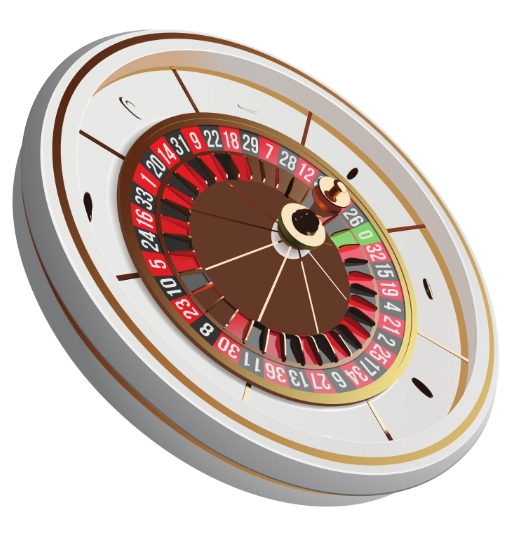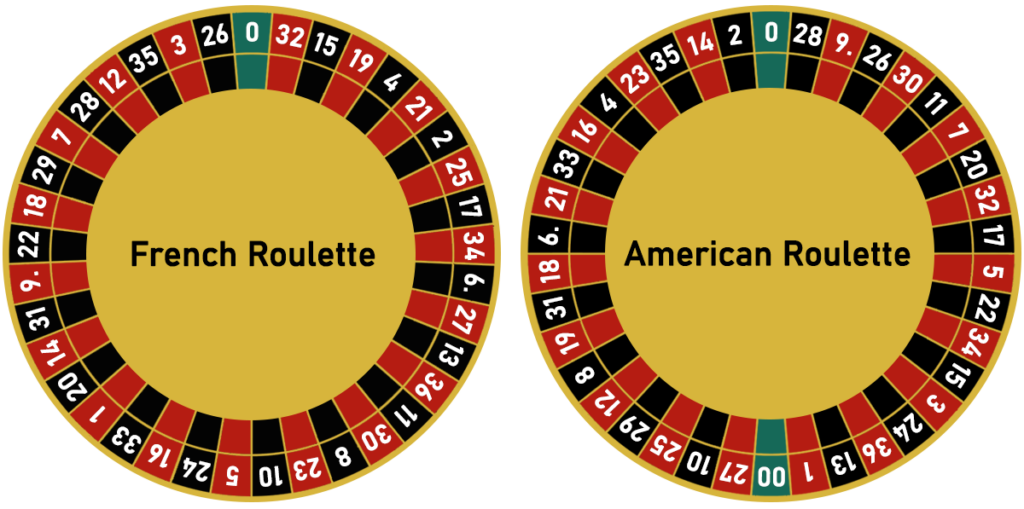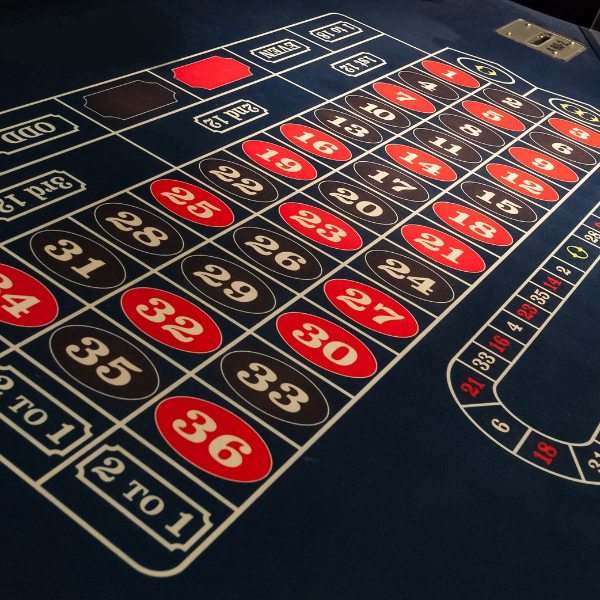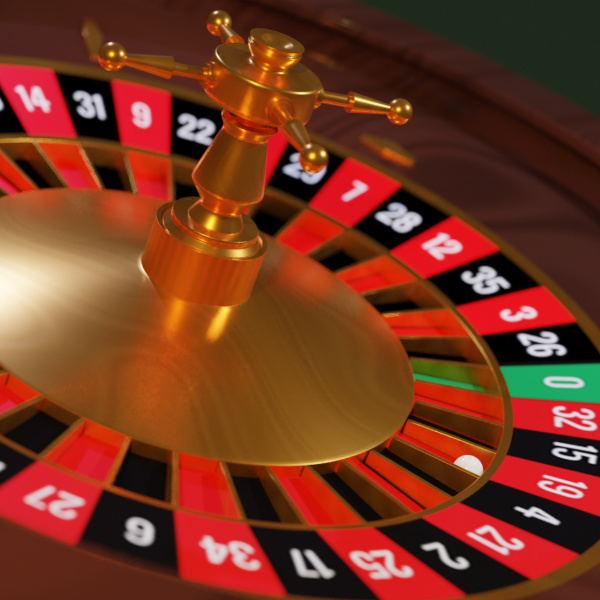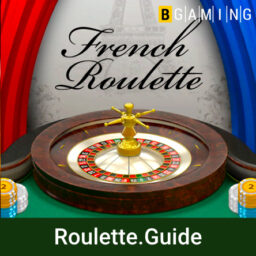

Today, the game known by many as simply roulette, can now be found in casinos across the globe in more or less the same format as its origins in Paris.
That's history. And while interesting on its own, what's really important to understand is that French roulette is a relative term, to that of its European and American counterparts, with different rules, odds, and betting options. This is what we'll examine today.
Table of Contents
- Best French Roulette Casinos 2026
- French Roulette Basics
- Try French Roulette for Free
- French Roulette Game Rules
- French Roulette - Differences from European and American Roulette
- French Roulette Payout Rates and Winning Odds
- Inside and Outside Bets in French Roulette
- Fixed and Variable Call Bets in French Roulette
- French Roulette Tips & Tricks
- French Roulette FAQs
Best Casino to play French Roulette 2026
  | 94/100 Read Review | $10,000+ 500 Free Spins | visit Lucky Dreams | |
  | 94/100 Read Review | $1,500 + 500 Free Spins | visit Playzilla | |
  | 91/100 Read Review | $500 | visit Stake | |
  | 91/100 Read Review | $2,500 | visit Betandplay | |
  | 91/100 Read Review | $300 + 150 Free Spins | visit Playamo | |
  | 91/100 Read Review | Promotions | visit Roobet | |
  | 91/100 Read Review | $1,500+ 400 Free Spins | visit Spinoli | |
  | 90/100 Read Review | $60,000+ 400 Free Spins | visit BC.Game | |
  | 90/100 Read Review | $5,000+ 400 Free Spins | visit Just Casino | |
  | 90/100 Read Review | $100+ 100 Free Spins | visit National Casino | |
  | 90/100 Read Review | $500 or 5BTC+ 180 Free Spins | visit Bitstarz | |
  | 90/100 Read Review | $1,250+ 125 Free Spins | visit Bizzo | |
  | 90/100 Read Review | $3,000+ 200 Free Spins | visit PlatinCasino | |
  | 89/100 Read Review | 100% up to $120+ 120 Free Spins | visit 20Bet | |
  | 89/100 Read Review | $1,000+ 100 Free Spins | visit Instaspin | |
French Roulette Basics
French roulette is played on a wheel with 37 numbers. These including the numbers 1 through 36, and a single 0 pocket. All numbers are on either a black or red background, with the exception of the 0, which has a green slot.
While they may appear to be randomly placed, the numbers on all French roulette wheels are actually always ordered in the same sequence.
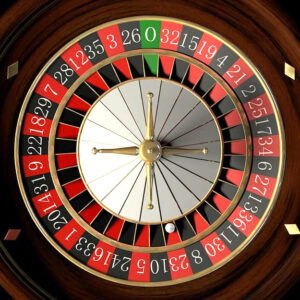

French Roulette wheel
To participate, players sit to one end of the table, as opposed to the American variant in which they stand. Wagers are placed using chips on the tableau, a cloth covered betting area, also known as the layout. A distinction is made between inside and outside bets. Sometimes the bet names will only be in French, sometimes with an English translation, and maybe in the US, English only.
The wheel itself is wooden, with a metal rotating plate inside. Traditionally, the wheel was positioned at the center of the table. However, due to space constraints, it is more likely now placed at one end of the table - with the exception of Monte Carlo casinos where you can still find the wheel in the center with the layout to either side.
The classic French roulette variant is supervised by a total of four croupiers, each with different tasks - throwing the ball, collecting bets, sorting chips properly, placing call bets, keeping track of players, and managing overall game play. However, not all casinos will employ so many people per table, with one or two generally sufficing.
Special features
- 37 numbers on the wheel, including a single 0.
- Single 0 accounts for the house edge (lower than in American roulette).
- Originally played on double tables, now usually on single tables.
- Traditionally staffed by four croupiers, now more likely one, max two.
- La partage or en prison rules are often applied.
- Fixed value for the chips used.
- Many call bets are available.
- Most common roulette game outside the Americas.
Double tables in French roulette are no longer common today. Local casinos often lack the space to physically accommodate them. That's why there are usually fewer croupiers per table as well.
Try French Roulette for Free
As your #1 roulette source, Roulette.Guide has secured you a major coup! Free French roulette, right here.


Even experienced players can benefit from this French roulette demo. Beyond the basics, it's a great way to explore the different betting systems and roulette strategies, without spending a dime. This way you can see which ones work for you, and which are simply myths.
French Roulette - Demo


French Roulette Game Rules
Each round of French roulette begins with the croupier calling out "Faites vos jeux"; ie. "place your bets".
This is when you decide where you want to place your chips and how many bets you want to place, remembering that you can make more than one bet per round.


Note: In earlier times, French roulette accepted cash bets. Today this is more the exception than the rule. The reason for this is two-fold. Chips ensure protection against money laundering and fraud. Plus, they offer game managers a better overview of what's happening on the table and are easier to keep track of.
The betting limits are set by the casino and may differ depending on the type of bet. For example, if there is a $12,000 table limit, this sum would refer to even money bets, with the lowest payout. As payout increases, the limit is reduced, so that a maximum of $6,000 can be placed on dozens and columns, and a maximum of $350 placed on straight bets. The casino usually provides details about the limits depending on the type of bet. You can easily see these limits in the game rules in online games.


As bets are being placed - or called out - the croupier turns the wheel, then throws the ball in, in the opposite direction to which the wheel is rotating. It usually takes a few seconds until the croupier then calls out: "Rien ne va plus", ie. "no more bets". The betting round is then closed.
Once the ball lands, the croupier announces the number, which also corresponds with other characteristics like color, even/odd, high or low, etc.
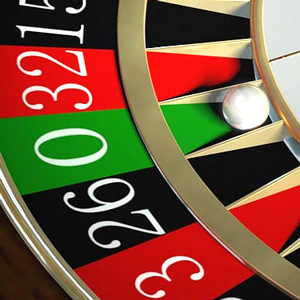

Similarly, the la partage rule may be in place in which a zero gives half your bet to the house and the other half back to you. Depending on the gaming table, you can choose which to employ, but sometimes only one of the two options is available, and occasionally none at all.
At a land-based casino, the croupier will use a râteau (French for rake) to sweep the losing chips from the table and to pay out winnings to the players. This roulette rake often has an adjustable handle, allowing the dealer to easily reach all chips and areas on the table.
The chips are then sorted before a new round begins. And then once again it's faites vos jeux, as the process begins anew.
French Roulette - Differences from European and American Roulette
In general there are a few main differences that set American and French roulette apart.
The most obvious one is that the French wheel is known to have a single zero pocket, while the American wheel famously has the addition of a double zero slot. This significantly impacts the house edge which is usually 2.7% in French roulette (even lower with the la partage rule), and much larger at 5.26% for the American version.
The numbers on the wheel in each game are also arranged differently. The American and French wheels each have their own sequence.
The French game often has two or more croupiers working the table, while the American variant has one. Furthermore, the chips may be different, with American roulette sometimes allowing players to determine their value, while in French roulette they have fixed sums.
Call bets are a feature found in French roulette, but rare in its American counterpart. And while French roulette accommodates the la partage and en prison rules, American games rarely do. Plus, at land-based casinos French roulette is generally played seated, while American roulette is a standing room game.
Finally, due in large part to these factors, American roulette is considered a faster game.
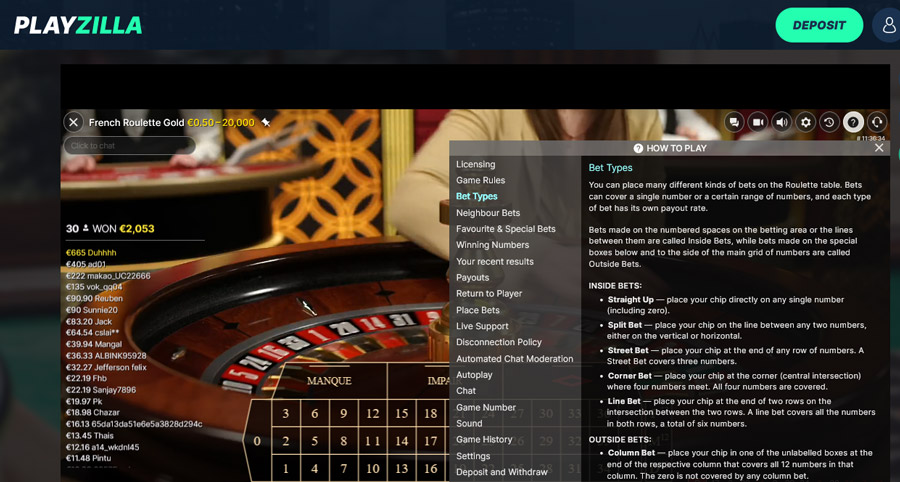

As for French and European roulette, although many describe them as identical, there are definitely slight differences. For example, the betting table generally looks a bit different, and the language used on them differs - French tables using French terms and European ones using English. And the la partage rule or en prison rules aren't necessarily used in European roulette either.


French Roulette Payout Rates and Winning Odds
The winning rate and probability that can be expected with French roulette depends on the type of bet placed.
The highest probability of winning is on even money bets, since they cover the most numbers with a single chip, though they offer the lowest prize money. Straight bets on the flipside are the most profitable, but also the least likely to win.
The following table should help make this distinction clear:
| Bet type | Probability of winning | Payout ratio |
|---|---|---|
| Plein (straight up bet) - single number | 2.70% | 35:1 |
| Cheval (split bet) - two numbers | 5.41% | 17:1 |
| Transversal (street, side, or trio bet) - three numbers | 8.11% | 11:1 |
| Carré (corner or square bet) - four numbers | 10.81% | 8:1 |
| Transversal simple (half dozen, six-line, line bet, or double street bet) - six numbers | 16.22% | 5:1 |
| Colonnes (column bet) - 12 numbers | 32.43% | 2:1 |
| Douzaines (dozens bet) - 12 numbers | 32.43% | 2:1 |
| Even money - Evens, odds, red, black, high, or low bet (18 numbers) | 48.65% | 1:1 |
To explain, 1:1 does not mean you win nothing. Rather if you bet $20 on red, the casino will pay back your $20 and another $20, so there is something to be won. That is 1X your stake, and your stake itself.


Inside and Outside Bets in French Roulette
Outside bets include all those options that contain at least 12 numbers. One of the most popular of which are even money bets, which are generally considered low-risk options with the same simple odds of 1:1.
The 36 numbers that make up a French roulette, in addition to the zero that determines the house edge, are divided in three different ways to create these bets, namely:
- Colors - There are 18 red (rouge) and 18 black (noir) numbers on a French roulette wheel.
- Even or odd - The number of even (pair) and odd (impair) numbers are also identical.
- High or low - The third variant is the division into low (manque) numbers as in 1 through 18, and high (passe) numbers which cover 19 through 36.
After each game round ends, the croupier not only announces the number where the ball has landed, but also the color and attributes such as high/low and even/odd to easily determine the winners of these bets.
The other two types of outside bets you'll encounter in French roulette are douzaine bets (i.e. dozens) and colonne bets (as in columns).
Dozens bets
As the name implies, a dozens bet covers 12 numbers. Not any 12 numbers, mind you, but an exact number as marked on the betting board. Your options are as follows:
- P12 - P as in premier, refers to the first dozen numbers from 1 through 12.
- M12 - The milieu or middle dozen includes the numbers 13 through 24.
- D12 - The dernier, or last dozen includes the remaining numbers from 25 to 36.
Column bets
In French roulette you can also bet on 12 numbers by making a column bet. While there isn't usually a space on the table labelled as such, you can plainly see on the betting board what each column looks like, and the 12 numbers each covers. To place such a bet, you'd put your chips at the bottom of such a column; that is beneath the number 34, 35, or 36.
There are also multiple inside bets you can place in this variant, covering fewer numbers, but no less interesting. The main ones are:
Plein bets
Better known as straight up or full number bets in English, this is the term used for betting on a single number. The plein bet is the bet with the lowest odds, but correspondingly has the highest payout potential.
Cheval bets
This is a scenario in which one chip covers two adjacent numbers, which is why it's called a split bet. To do so, simply place your chip on the grid line between the desired numbers, for example 2 and 3.
Transversale plein bets
When making a street bet, you'll cover three numbers across, adjacent on the betting table. For example: 10, 11, and 12. As some of these number combos may be hard to physically reach at an actual casino, you may need to call it out to the croupier to place your chips for you.
Le trois premiers bets
Nice and simple, this is a wager on the first three numbers on the tableau. As such, the bet includes 0, 1, and 2.
Carré bets
This is a corner bet on four numbers that form a square, for example 5, 6, 8, and 9. To make it, place your chips on the intersection between the desired numbers; or as an announced bet, you'd call out for our example "carré 5 – 9".
Le quatre premiers bets
This is another bet that includes the number zero. More specifically, it refers to the first four numbers, being 0, 1, 2, and 3. The winning rate is identical to that of a carré bet.
Transversal simple bets
Half dozen, six-line, line bet, or double street are all synonyms for this French bet. To make it, place the chip on the lower cross, which lies between two transverse rows (i.e. those set crosswise). Doing so covers six numbers at the same time with a single chip.
Fixed and Variable Call Bets in French Roulette
In addition to the classic options, French roulette also offers bets known as either call or announced bets.
They are only possible in French roulette because each one refers to very specific number combinations that only apply to the French wheel. The American wheel has a different number sequence, so these series wouldn't be relevant.
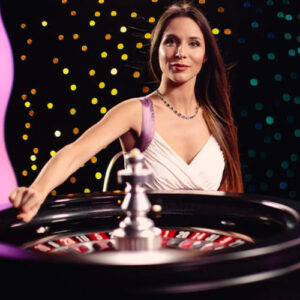

Croupier at Evolution Gaming
To make a call bet, you would have to call it out to the croupier, who will place your chips in the correct place accordingly. Online, most French roulette games will have a racetrack on the screen so you can easily place your own call bets.
Call bets can be divided into two types; either fixed call bets that always cover the same section of the wheel, or variable call bets which can cover different sections of the wheel, depending on the numbers that you've chosen.
The standard fixed call bets are:
- Voisins du zéro (neighbors of zero) - More accurately the grands voisins du zero is a bet that covers 17 numbers in total, all surrounding the number 0, from 22 to the left and 27 to the right, inclusive. To make it, nine chips are placed in at the intersection of particular numbers. These include the corner covering 25 to 29 (with 2 chips), lines 0, 2, 3 (also with 2 chips) and 1 chip each on the cheval bets 4/7, 12/15, 18/21, 19/22, and 32/35.
- Jeu zéro - The so-called zero game requires the use of four chips . Three splits are placed on 0/3, 12/15, and 32/35 respectively, as well as a straight bet on 26.
- Le tiers du cylindre (small series) - 12 of the 36 numbers can be covered with this small series bet, which covers a third of the wheel, and requires the use of six chips. To make it, a chip is placed on the divide between 5/8, 10/11, 13/16, 23/24, 27/30, and 33/36.
- Orphelins (orphans) - This is a five-chip bet that is divided into four split bets on all the numbers left out of other call bet series (i.e. 6/9, 14/17, 17/20, and 31/34), plus a straight up bet on the number 1.


In addition, there are variable call bet options such as:
- Finals en plein - These are bets in which you place chips on all numbers that end in the same digit. So if you chose 6 as your finale, you'd make a straight bet on 6, 16, 26, and 36 respectively. This would require a four-chip bet. If you choose a finale like 9, however, it would require just 3 chips, as the available numbers ending in that digit are just 9, 19, and 29.
- Finals à cheval - The final digits are also crucial here, but you're selecting two final digits making split bets, and sometimes plein bets on them, depending on which numbers you chose. For example, if you chose 3 and 6, then it would be split bets on 3/6, 13/16, 23/26 and 33/36, with four chips required. For a choice of 8 and 9 it would be a split on 8/9 and another on 28/29, plus straight bets on 18 and 19 separately because they're not beside each other on the table. And for 0 and 1, you'd need five chips to cover 0/1, 10/11, 20/21, and 30 and 31 separately.
- Neighbors - Here a number is played alongside the numbers before and after it. This means that if you called 17 and two neighbors, the croupier places both the 17 and the two numbers before and after it, adding up to a total of five bets.
French Roulette Tips & Tricks
The most important thing is to understand and internalize is the basic rules of French roulette.
Once you understand how the game is played, the odds and corresponding payouts, you'll be better equipped to make sensible bets. This includes taking into consideration your bankroll as much as your appetite for risk, and finding the ideal balance.


For the risk-averse and beginners alike, it may be simplest to stick to even money bets such as colors, as the risk of loss is lowest, even if the odds aren't outstanding.
You can also follow any of the popular roulette betting systems, which dictate how to bet following a loss or a win respectively, to help improve your overall outcomes. Or you can explore the rather unscientific strategies like the Kesselgucken method, James Bond roulette strategy, or Kavouras strategy to name a few.
Most importantly, the trick is to keep enjoyment in mind. As a gambling game, there is no definitive way to beat the wheel. That isn't going to happen over the long run, as you simply cannot predict numbers. Where the wheel lands is entirely random. Your best bet is to look at roulette as a hobby or pastime; that is, a way to have fun. And just maybe you'll win something along the way.
French Roulette FAQs
- Which call bets are possible when playing French roulette?
- What does jeu zéro mean in French roulette?
- How does the la partage rule work?
- What is the house edge in French roulette?
- How can I improve my odds of winning when playing French roulette?
- Does French roulette have any winning systems that work?
- What advantages does French roulette have over American roulette?
1. Which call bets are possible when playing French roulette?
French roulette has call bets mixed in - voisins du zero, le tiers du cylinder, orphelins, finals en plein, finals à cheval, or jeu zéro. These are also known as announced bets and are not available in American roulette.
2. What does jeu zéro mean in French roulette?
Jeu zero, translates literally into "zero game". It is a popular call bet which includes both the zero and its six immediate neighbors on the wheel. The bet is therefore on seven numbers in total (12, 35, 3, 26, 0, 32, and 15), with four chips spread over three cheval bets and one plein bet on 26.
3. How does the la partage rule work?
The la partage, loosely translated as sharing rule, is a nice benefit of playing French roulette. Typically applicable to even money bets, what it does is give you back half your wager if the ball lands in the zero pocket.
The en prison rule is similar, except while the house still takes half your stake, the other half remains in place, ie. imprisoned, for another spin of the wheel - so you're basically getting a second chance on your bet.
4. What is the house edge in French roulette?
In general, French roulette has a house edge of 2.7%. This can be cut in half to 1.35% on simple even money bets, provided that the la partage or en prison rules are in effect. This is another advantage of making even money bets, which already have a relatively high winning probability.
5. How can I improve my odds of winning when playing French roulette?
Your chances of winning when playing French roulette largely depend on the type of bet you choose. If a plein bet on your favorite number, say 7, is placed, your probability of winning is only 2.7%. If by contrast you go for your favorite color, like black, you'd up those roulette odds to 48.65%.
In other words, the way to improve your odds is to choose bets with a higher probability of winning.
6. Does French roulette have any winning systems that work?
Our experts have tested numerous roulette systems over the years to better understand them and determine which ones work best.
Bottom line? While none is a guarantee, they can be used to minimize your risk of loss. Which you choose has more to do with attitude, rather than proven results. That is, how to bet following a win or a loss, and by how much to increase or decrease your wager. The concept is less about a winning strategy than better bankroll management.
While you certainly don't need to follow any system, some find doing so useful. What is crucial, however, is to stick to professionally tested tips and tricks, so you don't get caught up in the moment and adhere to your own limits.
7. What advantages does French roulette have over American roulette?
Several elements make French roulette an advantageous game variant. The main one is the house edge which is just 2.7% as opposed to 5.26% in American roulette. Plus, the house edge in the French variant can be reduced even further on certain bets with the la partage or en prison rules.
The French game also has exciting call bets, which are great for people who love combos. And it's a slower game, which is a benefit to some, although that's a matter of personal taste.
Our French Roulette Recommendation
The most classic of casino games, French roulette is a popular mainstay of gambling play, and a game that's retained its appeal for hundreds of years.
If you've yet to play, we recommend trying a few rounds for free first, to get a feel for the rules, mechanics, and types of bets available. And if you already know the drill, then we don't need to convince you that this is by far one of the most interesting and exciting gambling games around.
